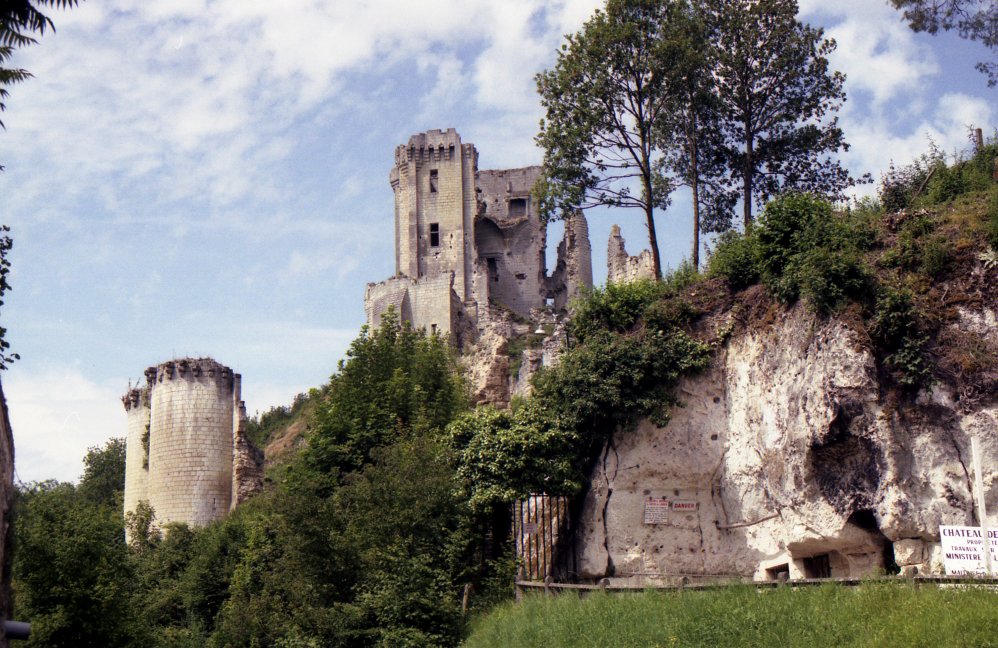Lavardin
A charter of 989 mentions Lavardin castle, although the site
is claimed
only to have been founded in the eleventh
century by the counts of Vendome by building a rectangular keep on a boss of rock in a valley
near the Loir. A priory of c.1040 lies in the outer
bailey.
The castle was sold to the counts of Vendome in 1130 and
repulsed Richard the Lionheart in 1188. Eventually it was
turned into a palace by
Jean Ier de Bourbon-Vendome in the late fourteenth century. On 11
March 1448 the English ambassadors of Maine met here
with Charles VII (1403-61) and his mistress, Agnes Sorel (1422-50), to
sign
the treaty of Lavardin which
brought a very temporary peace between England and France together with
the final evacuation of Le Mans and the bulk of Maine. Finally
Lavardin was
occupied by the Leaguers in 1589 before being dismantled in 1590 after
a siege by Henry IV (d.1610).
Description
The site consists of an early keep set upon a rocky knoll. This
hall was 70'x40', 3 storeys high and decorated with pilaster
buttresses. Some Romanesque features survive on the ground floor,
but the whole was refurbished in the 1380s and machicolations were
added on top. On the west side two round turrets, the northern
one holding a spiral stair, were added with a large D shaped tower in
between. This tower penetrated the line of the old shell keep
which surrounded the earlier keep. A similar layout with a
rectangular keep surrounded by a shell occurs at Montrichard.
There is a hornwork giving access to the shell keep from the NE.
This is heavily ruined, but has a fine stair tower centrally
within it. A polygonal tower late to the NE commanding the main
ward. This was concentric to the keeps and hornwork and had D
shaped towers, 5 to the south, two forming a fine twin towered
gatehouse of the form discussed at Caerphilly, and at least 2 to the
NE. This was surrounded by a chemise that had an entrance to the
NE from the town, above another twin towered gatehouse in the town
walls.
Why not join me here and at other French
castles? Information on this and other tours can be found at Scholarly
Sojourns.
Copyright©2019
Paul Martin Remfry

